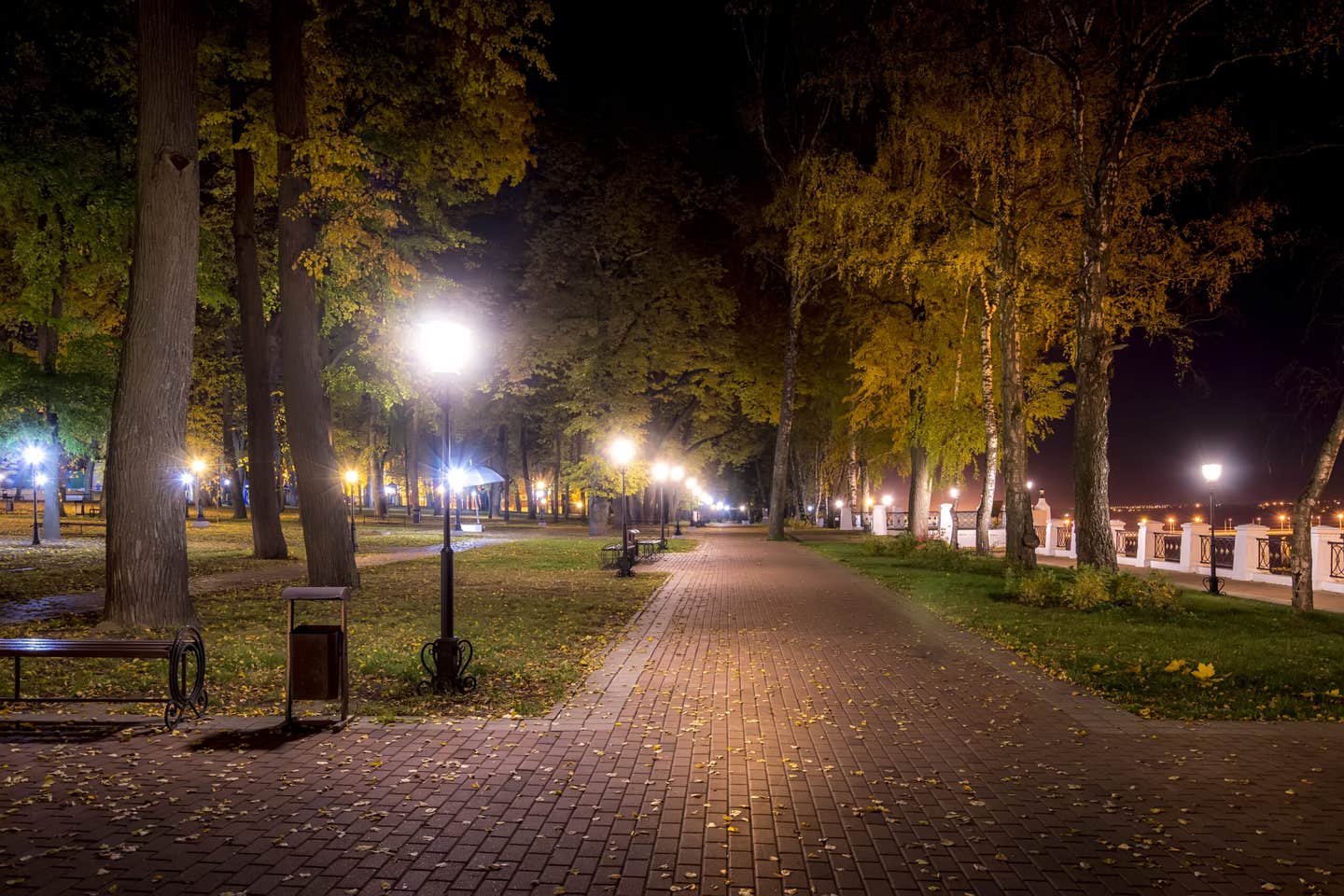Artificial light pollution emerges as a major climate threat
Artificial light is growing across the planet faster than almost any other human influence, reshaping how plants, animals, and microbes live their lives.

 Edited By: Joseph Shavit
Edited By: Joseph Shavit

New research shows nighttime light boosts carbon release across ecosystems. (CREDIT: Shutterstock)
Artificial light is growing across the planet faster than almost any other human influence. Once limited to towns and highways, that glow now touches roughly one quarter of all land ecosystems. The spread has created more than a nuisance for stargazers. It is reshaping how plants, animals, and microbes live their lives after sunset, and the latest research shows that the carbon balance of entire regions is shifting because of it.
How Nighttime Light Affects the Carbon Cycle
All ecosystems operate on a simple mechanistic exchange. During the day, plants draw carbon dioxide from the atmosphere and produce sugars through photosynthesis (scientists refer to this as gross primary production or GPP).
Concurrently, plants, microbes, and animals respire and release carbon through the conversion of organic matter and growth. This release is termed ecosystem respiration or Re. When Re is taken away from GPP, the result is a net exchange of carbon between the land surface and the atmosphere. This net exchange reveals information as to whether a given area is incorporating more carbon or releasing more carbon to the atmosphere.
Normally, sunlight and temperature drive this net exchange. Shortwave light from the sun enables photosynthesis, and temperature affects the speed of all of the chemical reactions associated with respiration. Artificial illumination at night does not change these basic drivers, but it can influence how life responds to these drivers. A vast majority of the species of plants and animals depend on cues for responses to darkness to open and close stomata, synchronize internal clocks, and regulate daily and seasonal rhythms. When environmental cues diminish, the entire system may fall out of synchrony.
A Continental Perspective on Light Pollution
Earlier studies on light pollution were largely restricted to small patches of land or the response of single types of organisms. You have likely heard of birds altering their migration patterns and plants budding earlier in the presence of streetlights. Despite the hundreds of single-species studies mentioned above and ecological studies of single sites with multiple species, there has been little evidence until now that artificial light can shift carbon flows across large regions.
To answer this question, they developed a research team comprising the two largest datasets on a global scale, one derived from satellite information, which measures nighttime brightness on a 1 km scale, and the other from FLUXNET2015, a network of towers across the globe measuring carbon moving between land and air.
The team acquired data from over 200 FLUXNET sites globally and settled on 86 sites located in North America and Europe. The reason for choosing sites in North America and Europe is that they are in similar climatic zones and offer a strong contrast in light exposure, allowing the researchers to disentangle the effects of artificial light exposure from other environmental factors.
Each FLUXNET tower provided either half-hourly or daily measures of net carbon exchange, which are measures of carbon absorbed during the daytime and carbon emitted during the night. The scientists also recorded temperature, daylight length, humidity, rainfall, land use, the distance from cities, and the annual length of night to determine whether the measured carbon flux followed the pathway expected based solely on temperature and sunlight, or whether they were altered by light pollution.
What the Data Revealed
The effect was noticeable at shorter timescales and persisted when the data were averaged over days and years. During short nights, stronger lighting stimulated leaves to stay active longer and kept stomata open, leading to increases in respiration. Microbes in the soil also reacted to those cues and released more carbon as they broke down organic materials.
At the same time, daytime carbon uptake told a more complicated story. In some instances, moderate levels of nighttime light seemed to extend the window for potential photosynthesis at dawn or dusk. However, there was not enough activity at this time to exceed the increase in respiration. When the researchers calculated carbon balance across all sites and years, they noted that the strongest pathway linking artificial light to net carbon exchange was through respiration rather than photosynthesis.
Those patterns held even when the team's analysis was restricted to a narrow but balanced count of sites. In the smaller set of sites, the statistical correlations between light exposure and respiration were even stronger.
Why Respiration Is the Weak Link
Both plants and microbes had finely tuned internal clocks in response to day length. When exposed to constant light during the night, those systems were allowed to drift. Stomata could stay open longer, leaves could respire more, and microbes could stay active during the hours they would have slowed down for the evening. The excess carbon released overnight will not equal the absorption occurring during the day. This imbalance compromises the land's capacity to remain a carbon sink.
Some plant species may respond to the increase in overnight light pollution by reallocating carbon from leaves to roots or reducing activity; however, each option has drawbacks. In C3-dominated ecosystems, exposure to overnight light causes elevated rates of mortality, decreased growth, and disrupted seasonal patterns. Collectively, this has longer-term implications for increased carbon loss relative to carbon gain.
A Clear Message for Climate Policy
The implications of this recent work contribute to the global carbon budget. Light pollution is, and continues to be, an increasing issue, now occurring annually at around 2% each year, yet most studies do not incorporate it into climate models. That is an important oversight because lighting currently accounts for approximately 6% of greenhouse gases and also accounts for around 20% of total electricity consumption. The authors of the research, led by Dr. Alice Johnston of Cranfield University, suggest it cannot be justified not to include lighting.
"Brighter nights resulted in increased carbon loss, which is a worry for our planet," she states. Her co-author, Jim Harris, notes that as the illuminated footprint grows, the compounding effect will be even greater with respect to the global carbon budget.
A Challenge We Can Resolve Now
Light pollution, unlike many environmental pressures, is easy to amend. Sustainable fixtures, lower wattage, directional lights (that don't cast outside of the premises), motion sensors, and dimmer switches provide easy options for reducing skyglow and saving money. All of which should lead to better health outcomes for wildlife and humans alike.
There are multiple good reasons to eliminate light pollution that affect public health (and opportunity), the emergence of nocturnal predators, and energy use, all together. Reducing light pollution energy consumption is also a good idea for safety and ecological reasons in municipalities. A well-lit community provides opportunities for nighttime observation and safe driving, protects public safety by reducing interactions with animals, and saves electricity.
Real-World Implications of the Research
The findings of this study support improved fixation of the land carbon sink. In modest communities with unnecessary nighttime lighting, reducing these elements will reduce excessive respiration and ultimately protect ecosystems that sequester carbon.
The knowledge will ultimately advance climate modeling to include light pollution as a driving factor of carbon cycling. Based on these findings, policymakers and conservation groups can act on their findings immediately.
Lighting is also inexpensive, and light pollution efforts tend to be popular, at least with local inhabitants (not necessarily commercial or other interests). For wildlife, reducing skyglow can enhance their opportunities to thrive, reduce resource emissions, and reduce noise in the landscape.
Research findings are available online in the journal Nature Climate Change.
Related Stories
- Exposure to excessive light pollution linked to Alzheimer's disease
- MIT is transforming plants into bright, eco-friendly city lights
- How light and city design are shaping healthier, happier lives
Like these kind of feel good stories? Get The Brighter Side of News' newsletter.
Rebecca Shavit
Science & Technology Journalist | Innovation Storyteller
Based in Los Angeles, Rebecca Shavit is a dedicated science and technology journalist who writes for The Brighter Side of News, an online publication committed to highlighting positive and transformative stories from around the world. With a passion for uncovering groundbreaking discoveries and innovations, she brings to light the scientific advancements shaping a better future. Her reporting spans a wide range of topics, from cutting-edge medical breakthroughs and artificial intelligence to green technology and space exploration. With a keen ability to translate complex concepts into engaging and accessible stories, she makes science and innovation relatable to a broad audience.



